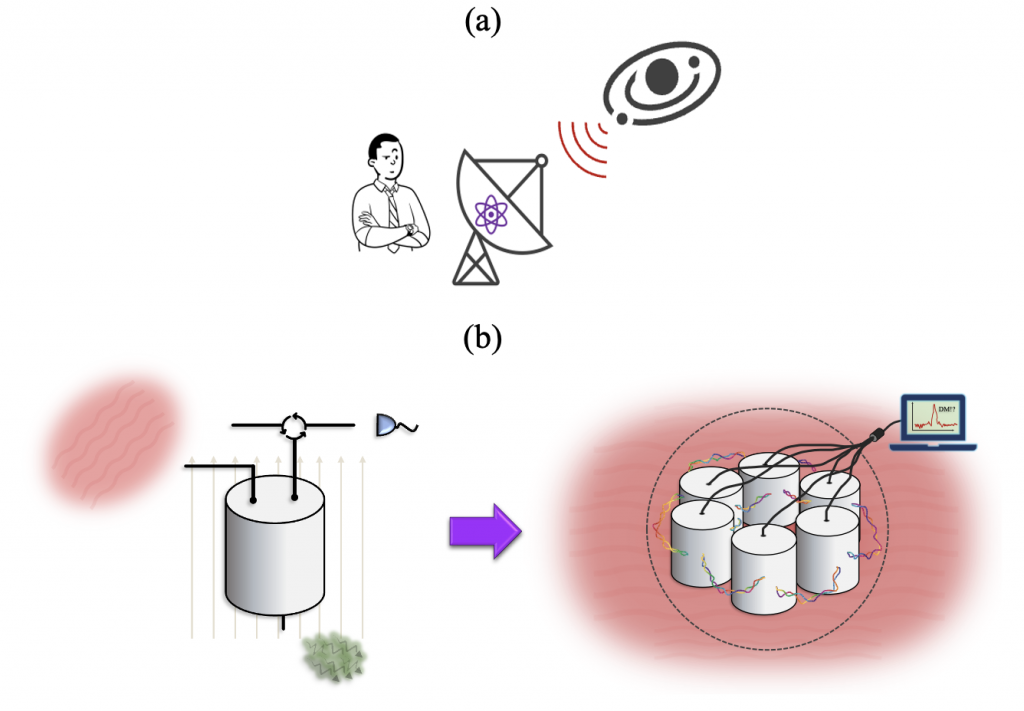Exploring the role of entanglement for next-generation detector technology, with applications to fundamental physics
The Science: We theoretically demonstrate that entangling and operating a quantum network of microwave cavity receivers can significantly accelerate the hunt for elusive dark matter particles.
The Impact: Our findings may influence the next generation of precision detectors for fundamental physics (e.g., hunting for dark matter) and highlights the potential of networking quantum sensors to push the field to new heights. Such benefits necessarily come with increased complexity in quantum engineering and additional challenges waiting to be conquered.

Figure 1. A quantum-enhanced hunt for dark matter. (a) Dark matter could leave a feeble imprint on terrestrial receivers, enabling its detection and characterization. (b) Left: Typical dark matter haloscope, consisting of a microwave cavity receiver immersed in a strong magnetic field. Axion dark matter may convert into microwave photons, which can then be detected. Right: A quantum-mechanically entangled array of haloscopes can be used to accelerate the hunt for dark matter.
Summary: Dark matter makes up a significant portion of the universal energy budget, yet no one has a clue of its makeup. Understanding its particle content, mass, and strength of possible coupling mechanisms presents a vast frontier for exploration. Adding to this challenge is the fact that dark matter constituents, such as axions or dark photons, couple extremely weakly to our detection devices. Techniques from quantum sensing, like utilizing squeezed light to mitigate shot noise, are poised to make a significant impact here, as exemplified by the recent achievements of the HAYSTAC collaboration’s squeezed-state receiver. In this work, we take a step further and explore the feasibility of a distributedsqueezed state receiver—wherein a single squeezed vacuum is distributed to many haloscopes in a quantum network of sensors. We demonstrate that employing such a network of quantum-entangled haloscopes (see Fig. 1) can significantly accelerate the hunt for dark matter, thereby emphasizing the role that quantum sensors can play in unveiling some of nature’s greatest mysteries.
Contact: Anthony J. Brady — ajbrad4123@gmail.com
Focus Area: Quantum Sensing
Institutions: University of Arizona, University of Southern California, Fermilab
Reference: Brady, Anthony J., et al. “Entangled sensor-networks for dark-matter searches.” PRX Quantum 3.3 (2022): 030333.
Funding Acknowledgement: This material is based upon work supported by the U.S. Department of Energy, Office of Science, National Quantum Information Science Research Centers, Superconducting Quantum Materials and Systems Center (SQMS) under the Contract No. DE-AC02-07CH11359.